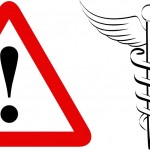Ten years ago, researchers and alarm system experts convened by AAMI and several U.S. regulatory bodies revealed that nurses in intensive care units are exposed to as many as 350 alarms per bed per day. An estimated 85% to 99% of these daily alarms require no action.
A consequence of this constant exposure to inactionable warnings is a phenomenon called alarm fatigue, whereby—similar to a village’s reaction to a lad crying “wolf” one too many times—nurses become increasingly nonreactive to alarms. Consequently, they may miss alarms indicating imminent patient injury or death. That’s why, as of 2014, The Joint Commission has required hospitals to establish alarms as an organizational priority and develop new alarm management and training strategies.
Progress so Far
“As a result, a remarkable increase has occurred in the number of research and quality improvement projects addressing alarm system safety and alarm fatigue. However, more work remains to be done to address alarm challenges,” a team of seven clinical and computer science experts wrote in a new research review for BI&T, the peer-reviewed journal of health technology from AAMI. “Despite the presence of national guidelines and increased research on alarm system safety, alarm fatigue remains a major healthcare burden.”
Their work, which references more than two dozen scholarly articles, reviews the “state of science in alarm system safety” as it is right now and considers studies on alarm system efficacy published within the last few years. As a whole, the authors found the state of alarm system research wanting.
They noted, for instance, that “few interventional studies have examined the association between changes in alarm number and nurse, organization, or patient outcomes.” This is despite that one of the first studies to ever touch on this subject showcased how nurses were still affected by alarm fatigue even after reducing the number of alarms they are regularly exposed to by 25%.
They also noted that, as of now, many observations about alarm management have been driven by real-time observation (in-person or video feeds) and note taking. While valuable for understanding the crucial human factors that drive alarm fatigue, this strategy alone ignores data that is readily available in environments with networked patient monitoring devices, such as technical alarm and log data.
However, the past decade of research has certainly produced insights. While the research community considers new strategies for gathering additional data, medical device vendors are urged to consider the evolution of the technologies that could mitigate alarm fatigue.
For instance, “different AI-based algorithms have been proposed, tested, and/or validated to improve the detective value of monitoring devices,” the authors wrote. “Once replicated and validated, vendors are encouraged to work collaboratively with other stakeholders to integrate AI-based, multivariate-alarm-detection algorithms into their systems as built-in safety features.”
Additionally, they outlined steps clinical leaders can take right now, such as testing the volume of alarms and determining whether the volume must be adjusted based on shift so that clinicians can better differentiate which devices need attention.
Lessons from the Cockpit
Interestingly, medical device design and healthcare delivery are not the only industries that have struggled with alarm fatigue. New research from The Ohio State University School of Health and Rehabilitation Sciences found the healthcare industry can improve hospital alarm design by borrowing from lessons learned by the aviation industry.
The work, published in BI&T as a peer-reviewed research article just last year, is titled “Lessons from the Glass Cockpit for Innovation in Alarm Systems to Support Cognitive Work”. The paper introduces three objectives that hospital leadership should focus on when designing their alarm system. The alarms should:
- Alert the appropriate clinical team member
- Ensure the most pressing health issue is addressed first
- Provide direction on how to manage the patient’s health issue
“Alarms are used to attract attention, but we believe alarms can also support awareness, prioritization, and decision-making,” said Emily Patterson, lead author and associate professor in the School of Health and Rehabilitation Sciences. “We aim to provide an approach to hospital alarms that goes beyond notifications and focuses on helping nurses have a better understanding of their patients.”
After consulting with engineers specializing in alarm system design, Patterson and her colleagues learned that aviation and clinical alarm systems share core safety objectives and challenges. However, they also determined that clinical alarm systems are unnecessarily complex compared to how aviation has approached the problem.
In their comparison of the industries’ approaches, the team had to account for a key difference—airplanes are assumed to be in good condition while hospital patients are usually unwell. The nature of an ICU, with many ill patients who may need attention, will understandably call for more alarms than a well-maintained aircraft’s own systems. However, it was the similarities on which Patterson’s team focused.
Both alarm systems trigger false notifications, for instance, and multiple alarms going off at the same time may make it hard to discern which alarm requires a rapid response. By taking cues from aviation engineering, the researchers showcased how alarm systems in hospitals can be improved. The most basic of their recommendations, for instance, is designing single alarms to account for the context of other alarms that have been recently triggered. By introducing these alarms into an “alarm escalation scheme” professionals can reduce the number of false alarms and distracting, simultaneous warnings.
Other considerations, such as routing notifications to specific parties, can also reduce the number of alarms that a nurse is exposed to daily. Notifications for issues such as dead batteries and patient requests for water could be routed to other staff, for instance, allowing nurses to focus on alarms specific to patient care.
“Overall, we advocate for reconceptualizing alarms to be integrated systems for supporting the cognitive work of nurses on a unit, collaborations with code blue response teams and respiratory therapists, and communications with patients and other clinical staff,” Patterson and her colleagues concluded.
Resources
- A. K. Sowan et al (2022) “State of Science in Alarm System Safety: Implications for Researchers, Vendors, and Clinical Leaders.” BI&T. https://doi.org/10.2345/0899-8205-56.1.19
- E. S. Patterson et al (2021) “Lessons from the Glass Cockpit: Innovation in Alarm Systems to Support Cognitive Work.” BI&T. https://doi.org/10.2345/0899-8205-55.1.29







